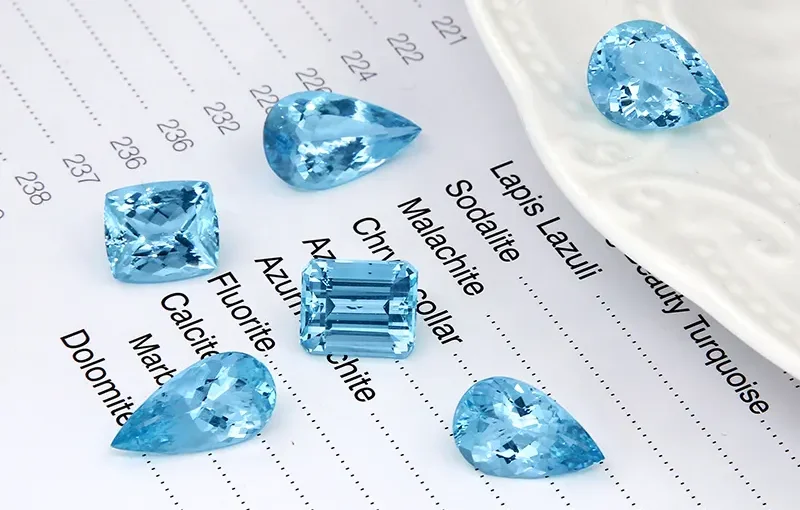Birthstone Engagement Rings: A Personalized Symbol of Love
Engagement rings are more than just jewelry—they’re timeless symbols of commitment, love, and individuality. While diamonds remain a classic choice, couples increasingly seek unique alternatives that reflect their personal stories. Birthstone engagement rings, which feature gemstones tied to specific birth months, offer a deeply meaningful and customizable option. This guide explores why birthstones make exceptional engagement rings, their unique properties, and how to choose the perfect one. Why Birthstone Engagement Rings? Birthstone rings celebrate individuality while honoring tradition. Each gemstone carries symbolic meanings, cultural significance, and vibrant colors, making them ideal for couples who value personalization. Whether you’re drawn to January’s garnet (loyalty) or July’s ruby (passion), these stones infuse your ring with intention and rarity. Birthstones by Month: Meanings & Properties January – Garnet Color: Deep red to burgundy. Meaning: Loyalty, protection, and eternal friendship. Durability: 6.5–7.5 Mohs (suitable for occasional wear). February – Amethyst Color: Purple hues. Meaning: Wisdom, peace, and spiritual clarity. Durability: 7 Mohs (reasonably durable). March – Aquamarine Color: Pale blue to sea green. Meaning: Courage, serenity, and harmony. Durability: 7.5–8 Mohs (good for daily wear). April – Diamond Color: Colorless to fancy hues. Meaning: Eternal love, strength, and purity. Durability: 10 Mohs (the hardest gemstone). May – Emerald Color: Rich green. Meaning: Growth, rebirth, and fidelity. Durability: 7.5–8 Mohs (prone to inclusions; handle with care). June – Pearl or Alexandrite Pearl: Purity and innocence (softer, avoid chemicals). Alexandrite: Color-changing magic and good fortune (8.5 Mohs). July – Ruby Color: Vivid red. Meaning: Passion, vitality, and prosperity. Durability: 9 Mohs (excellent for daily wear). August – Peridot Color: Lime green. Meaning: Healing, positivity, and new beginnings. Durability: 6.5–7 Mohs (best for protective settings). September – Sapphire Color: Blue (or fancy hues). Meaning: Wisdom, nobility, and fidelity. Durability: 9 Mohs (extremely durable). October – Opal or Tourmaline Opal: Creativity and hope (5.5–6.5 Mohs; delicate). Tourmaline: Versatile colors and emotional healing (7–7.5 Mohs). November – Citrine or Topaz Citrine: Warmth and abundance (7 Mohs). Topaz: Clarity and strength (8 Mohs). December – Turquoise, Tanzanite, or Blue Zircon Turquoise: Protection (5–6 Mohs; avoid moisture). Tanzanite: Royalty and spiritual awakening (6.5–7 Mohs). Month Birthstone(s) Color(s) Properties (Mohs Hardness) Symbolic Meaning January Garnet Deep red to burgundy 6.5–7.5 Loyalty, protection, eternal friendship February Amethyst Purple hues 7 Wisdom, peace, spiritual clarity March Aquamarine Pale blue to sea green 7.5–8 Courage, serenity, harmony April Diamond Colorless to fancy hues 10 Eternal love, strength, purity May Emerald Rich green 7.5–8 Growth, rebirth, fidelity June Pearl / Alexandrite White / Color-changing 2.5–4.5 (Pearl) / 8.5 (Alex) Purity, innocence (Pearl); Magic, fortune (Alex) July Ruby Vivid red 9 Passion, vitality, prosperity August Peridot Lime green 6.5–7 Healing, positivity, new beginnings September Sapphire Blue (or fancy hues) 9 Wisdom, nobility, fidelity October Opal / Tourmaline Multicolor / Pink, green, etc. 5.5–6.5 (Opal) / 7–7.5 (Tour) Creativity, hope (Opal); Emotional healing (Tour) November Citrine / Topaz Yellow-orange / Blue, white, etc. 7 (Citrine) / 8 (Topaz) Warmth, abundance (Citrine); Clarity, strength (Topaz) December Turquoise / Tanzanite / Blue Zircon Blue / Violet-blue / Sky blue 5–6 / 6.5–7 / 7.5 Protection (Turquoise); Spiritual awakening (Tanzanite); Prosperity (Zircon) Key Notes: Durability: Higher Mohs = better suited for daily wear (e.g., sapphire, ruby, diamond). Color Variations: Some stones (e.g., sapphire, tourmaline) come in multiple hues. Symbolism: Align stones with personal values (e.g., ruby for passion, aquamarine for calm). Designing Your Birthstone Engagement Ring Pair with Diamonds: Accent stones add sparkle and durability. Metal Choice: White gold or platinum enhances cool-toned stones (e.g., sapphire); yellow gold complements warm hues (e.g., citrine). Protective Settings: Bezels or halo designs safeguard softer gems like opal or lab-grown diamond. Why Choose a Birthstone Engagement Ring? Personal Significance: Aligns with birth months, anniversaries, or shared memories. Unique Aesthetic: Stand out with vibrant colors and unconventional designs. Ethical Options: Many birthstones (e.g., lab-grown sapphires) offer eco-friendly alternatives. Buying Tips Prioritize Durability: Opt for harder stones (e.g., sapphire, ruby) for daily wear. Check Certification: Ensure ethical sourcing and quality. Insurance: Protect sentimental and financial value. Are birthstone engagement rings durable enough for daily wear? It depends on the stone! Sapphires, rubies, and diamonds (9–10 Mohs) are ideal. Softer stones like opal or pearl require careful wear. Can I pair a birthstone with a diamond? Absolutely! Diamond accents add brilliance and enhance durability. Is a birthstone ring traditional for engagements? While unconventional, they’re rising in popularity for their personalized symbolism. Which birthstone is the rarest? Alexandrite (June) and red diamonds are among the rarest and most valuable. How do I clean my birthstone ring? Use a soft cloth and mild soap. Avoid ultrasonic cleaners for porous stones like opal or turquoise. Can I use my partner’s birthstone instead of mine? Yes! Many couples choose stones representing their partner’s birth month or shared milestones. Are birthstone rings more affordable than diamond rings? Often yes—semi-precious stones (e.g., amethyst, peridot) are budget-friendly, while sapphires or rubies can rival diamond prices. Do birthstones have cultural meanings? Yes! For example, emeralds symbolize fertility in some cultures, while rubies represent passion in others. Can I reset a family heirloom birthstone into an engagement ring? Consult a jeweler to assess the stone’s condition and design compatibility. Are lab-created birthstones a good option? Yes! They offer ethical, affordable alternatives with identical properties to natural stones.












